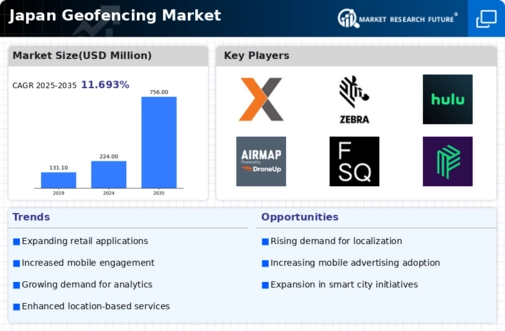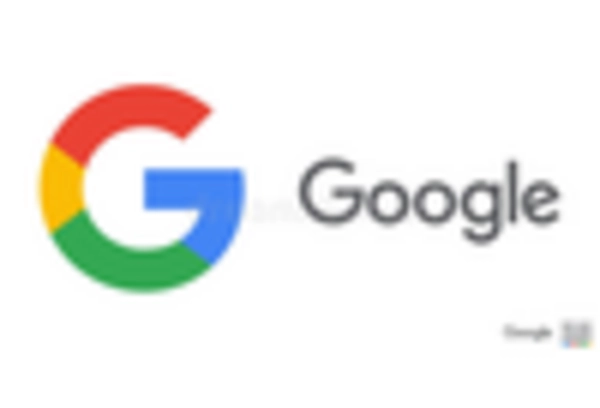The geofencing market in Japan is characterized by a dynamic competitive landscape, driven by rapid technological advancements and increasing demand for location-based services. Major players such as Google LLC (US), Apple Inc. (US), and Verizon Communications Inc. (US) are at the forefront, leveraging their extensive technological capabilities and vast user bases. Google LLC (US) focuses on enhancing its geolocation services through continuous innovation, while Apple Inc. (US) emphasizes privacy and user experience in its geofencing applications. Verizon Communications Inc. (US) is strategically expanding its 5G network, which is expected to bolster geofencing capabilities, particularly in urban areas. Collectively, these strategies contribute to a competitive environment that is increasingly centered around technological differentiation and user-centric solutions.
In terms of business tactics, companies are increasingly localizing their operations to better cater to the Japanese market. This includes optimizing supply chains to ensure timely delivery of services and products. The competitive structure of the geofencing market appears moderately fragmented, with several key players vying for market share. However, the influence of major companies is substantial, as they set industry standards and drive innovation, thereby shaping the overall market dynamics.
In October 2025, Google LLC (US) announced the launch of a new geofencing feature integrated into its Google Maps platform, aimed at enhancing real-time location tracking for businesses. This strategic move is significant as it not only strengthens Google’s position in the geofencing market but also provides businesses with advanced tools to engage customers more effectively. The integration of this feature is likely to attract more businesses to utilize Google’s services, thereby increasing its market share.
In September 2025, Apple Inc. (US) unveiled a partnership with a leading Japanese retail chain to implement advanced geofencing technology in their stores. This collaboration is pivotal as it allows Apple to showcase its commitment to enhancing customer experiences through personalized marketing strategies. By leveraging geofencing, the retail chain can send targeted promotions to customers' devices when they are in proximity to the store, potentially increasing foot traffic and sales.
In November 2025, Verizon Communications Inc. (US) revealed plans to expand its 5G network coverage in Japan, specifically targeting urban areas where geofencing applications are most prevalent. This expansion is crucial as it enhances the reliability and speed of geofencing services, enabling businesses to utilize real-time data more effectively. The move is expected to position Verizon as a leader in providing robust geofencing solutions, particularly in densely populated regions.
As of November 2025, current trends in the geofencing market indicate a strong emphasis on digitalization, sustainability, and the integration of artificial intelligence (AI) into location-based services. Strategic alliances among key players are increasingly shaping the competitive landscape, fostering innovation and enhancing service offerings. Looking ahead, it is anticipated that competitive differentiation will evolve, with a shift from price-based competition to a focus on technological innovation, reliability of supply chains, and enhanced customer experiences. This transition underscores the importance of adaptability and forward-thinking strategies in maintaining a competitive edge in the geofencing market.

















Leave a Comment